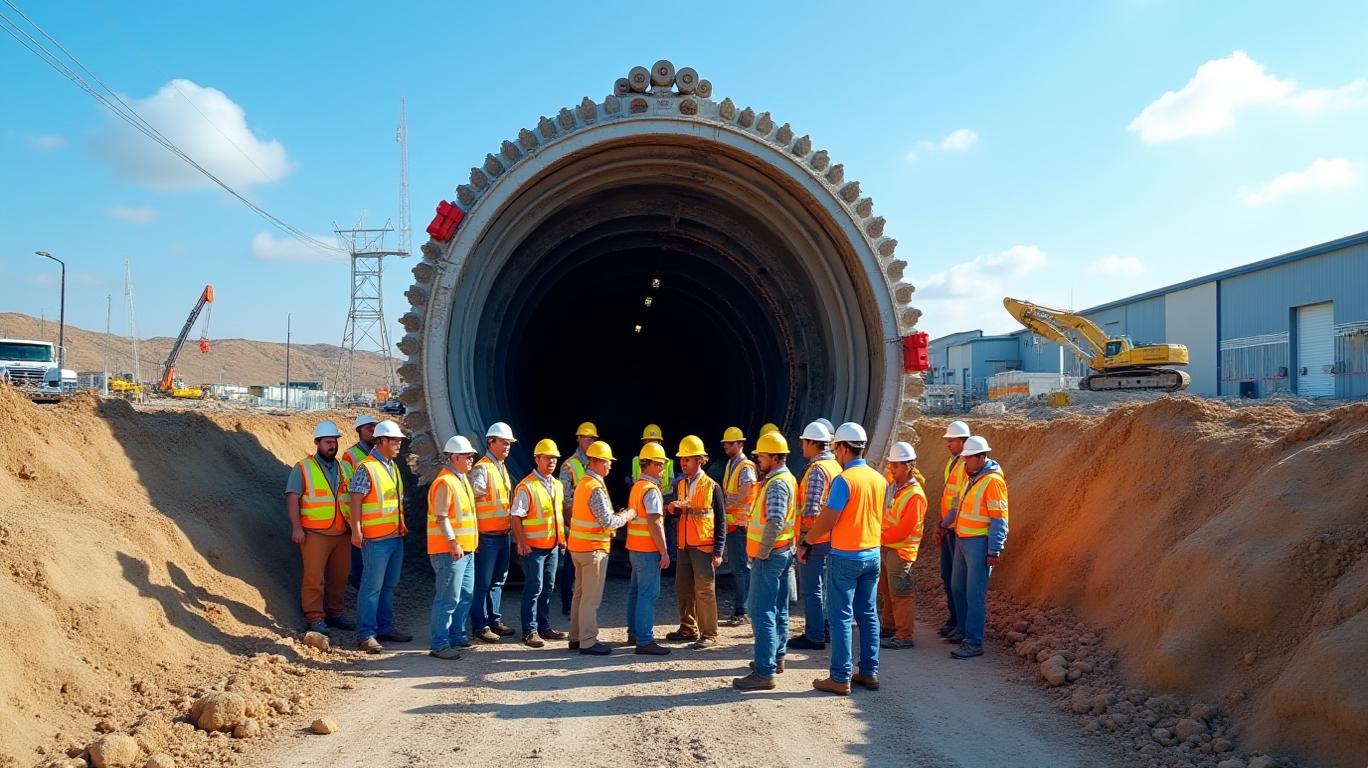HS2's Bromford Tunnel Breakthrough: A Catalyst for UK Infrastructure Resilience and ESG-Driven Growth
The completion of the Bromford Tunnel—a 5.8km marvel of engineering—marks a pivotal moment in the UK’s High Speed Two (HS2) project. This milestone, achieved by the Balfour Beatty VINCI joint venture, underscores the growing reliability of large-scale infrastructure projects in an era where resilience and sustainability are paramount. For investors, this is more than a technical triumph; it’s a signal that UK infrastructure modernization is transitioning from ambition to reality, with Balfour Beatty positioned to capitalize on the economic and ESG dividends.

Technical Mastery: De-Risking HS2’s Future
The Bromford Tunnel’s dual-bore excavation, completed by TBMs Mary Ann and Elizabeth, exemplifies Balfour Beatty’s expertise in navigating complex geology and live infrastructure. The first bore’s May 2025 breakthrough—after 652 days of relentless progress—demonstrates the firm’s ability to execute on ambitious timelines. With the second bore on track for autumn 2025, the project’s on-time delivery erodes lingering execution risks, a critical concern for investors wary of delays in megaprojects. This precision opens doors to future contracts, as HS2’s £96 billion budget (as of 2023) still requires delivery of viaducts, depots, and signaling systems—all areas where Balfour Beatty’s credibility is now bolstered.
A surge in BBY.L’s stock following the Bromford milestone would validate market confidence in its project execution prowess.
ESG as a Growth Multiplier: Beyond the Balance Sheet
The Bromford Tunnel isn’t just concrete and steel—it’s a blueprint for ESG-aligned growth. Over one million tonnes of excavated spoil, instead of being wasted, are repurposed for the Delta Junction construction site, slashing landfill use and carbon footprints. This circular economy approach aligns with HS2’s sustainability mandates, a key differentiator in an era where ESG compliance is a non-negotiable for public contracts.
Locally, the project has created 450 jobs and leveraged subcontractors like Tunnelcraft and Rorcon, which have embedded skills training and apprenticeships into their workflows. This job creation isn’t merely philanthropy—it’s strategic. As the UK grapples with regional economic disparities, projects that anchor local supply chains and workforce development become political and financial winners. Balfour Beatty’s focus here positions it as a partner for future infrastructure programs, from Crossrail 2 to Northern Powerhouse rail.
Economic Resilience: The Bromford Effect
The tunnel’s completion isn’t an end—it’s a catalyst. By enabling HS2’s full operational launch, it will unlock a rail corridor capable of moving 300 trains daily by 2035, slashing journey times between Birmingham and London to 49 minutes. This efficiency will spur regional economic multipliers: business hubs in the West Midlands, once constrained by overcrowded rail lines, will attract talent and investment. For Balfour Beatty, the Bromford Tunnel’s success primes it to secure follow-on contracts for outfitting (e.g., the 20,797 precast concrete segments required) and maintenance, creating a recurring revenue stream.
Growing passenger demand will pressure legacy rail networks, accelerating the need for Balfour Beatty’s expertise in modernization.
Investment Thesis: A Play on Certainty in an Uncertain World
Investors seeking exposure to infrastructure resilience and ESG-driven growth should view Balfour Beatty as a low-risk, high-reward opportunity. The Bromford Tunnel’s completion reduces execution risk, while its ESG credentials and regional job creation amplify the firm’s appeal to ESG-focused funds. With HS2’s Depot and Network Integrated Control Centre now within reach—both critical to HS2’s operational success—the next 12–18 months could see Balfour Beatty secure contracts valued in the hundreds of millions.
The firm’s stock, currently undervalued relative to peers, stands to benefit from two tailwinds: the de-risking of HS2’s Phase One and the UK government’s renewed focus on shovel-ready projects post-Bromford. For the risk-averse, this is a bet on inevitability: the UK’s rail system must modernize, and Balfour Beatty is among the few capable of delivering it.
In the words of the tunnel’s namesake, Mary Ann (a nod to the first woman to drive a steam engine), this project is a testament to progress. For investors, the message is clear: act now, before the Bromford effect becomes a boom.

Comments
No comments yet